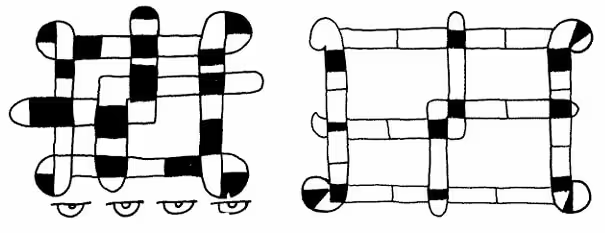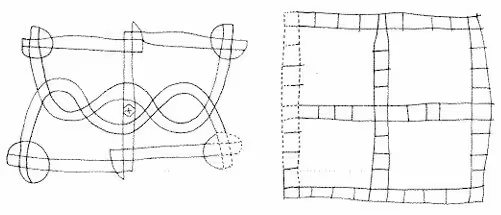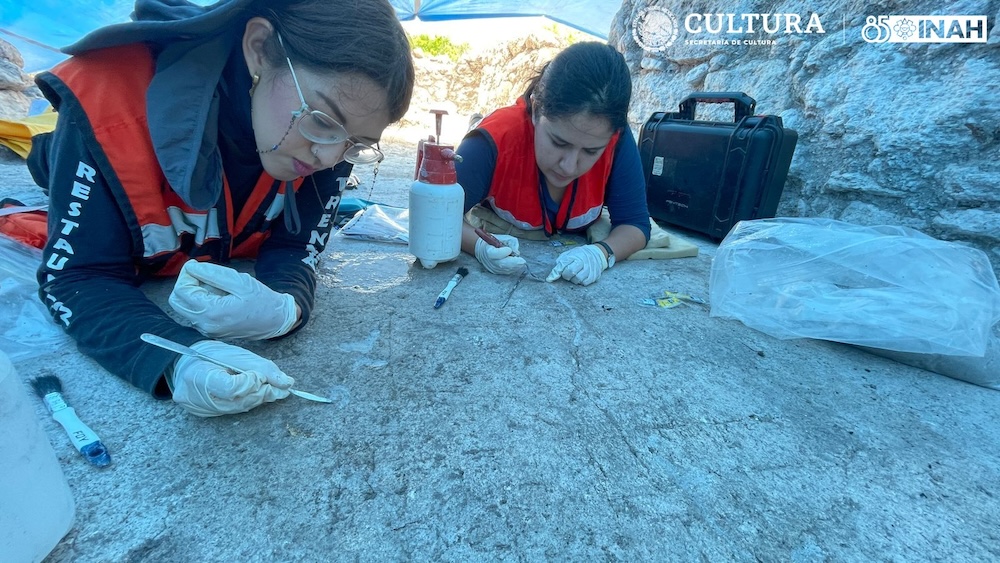The Game of Patolli: Between the Civic and the Religious


The patolli board, which has been identified in various regions such as Teotihuacan, Tula, and the Maya lowlands—like the one found in structure T7_44279—is a game played on a cruciform board and is associated with religious and calendrical symbolism.
It is important to remember that, for the ancient Maya, calendrical aspects were strongly tied to their worldview, which is why the true meaning of what the game represents is still under debate. For example, in a study conducted by Swezey (1983), it is suggested that the game, mostly depicted in the Borgia Codex or the Codex Vaticanus, is associated with Xiuhmolpilli and Macuilxóchitl. In fact, it was a portable ballgame played with dice. Furthermore, the study explains that each player had to move through fifty-two spaces, and after every thirteenth space, the player would reach a "safe" or "penalized" space symbolized by a double triangle or a cross reminiscent of the Ollin sign.
However, another detail still under debate is whether the patollis depicted in the codices and in the Central Highlands are the same as those found in graffiti or engravings, such as the one on monument T7_44279. One proposal suggests that those found in graffiti or engravings are proto-patollis. Nevertheless, both share common elements, such as symbolism that possibly refers to the four cardinal points, which could represent a flower.
Regarding their chronology, they have been documented in Teotihuacan during the middle and late periods (450–750 CE), corresponding to the Late Classic period in the Maya region. This suggests a connection with the one found on monument T7_44279, which, according to Saucedo, dates to 600–900 CE.
Religious and Civic Character
One noteworthy aspect of the patolli found on Front 3 of Section 7 is that it was located in a civic space. This suggests, as noted by Dena Castro, that the area was used for gatherings of high-ranking individuals and was probably employed for purposes of mediation or leisure, separate from political discourse. This adds to the debate about whether patollis were exclusively religious and calendrical in nature, as previously suggested. Undoubtedly, this highly significant discovery contributes to the discussion surrounding one of the most important Mesoamerican games for which we have information.
References
* El INAH conserva nueve patollis, juegos mesoamericanos, descubiertos en obras del Tren Maya
